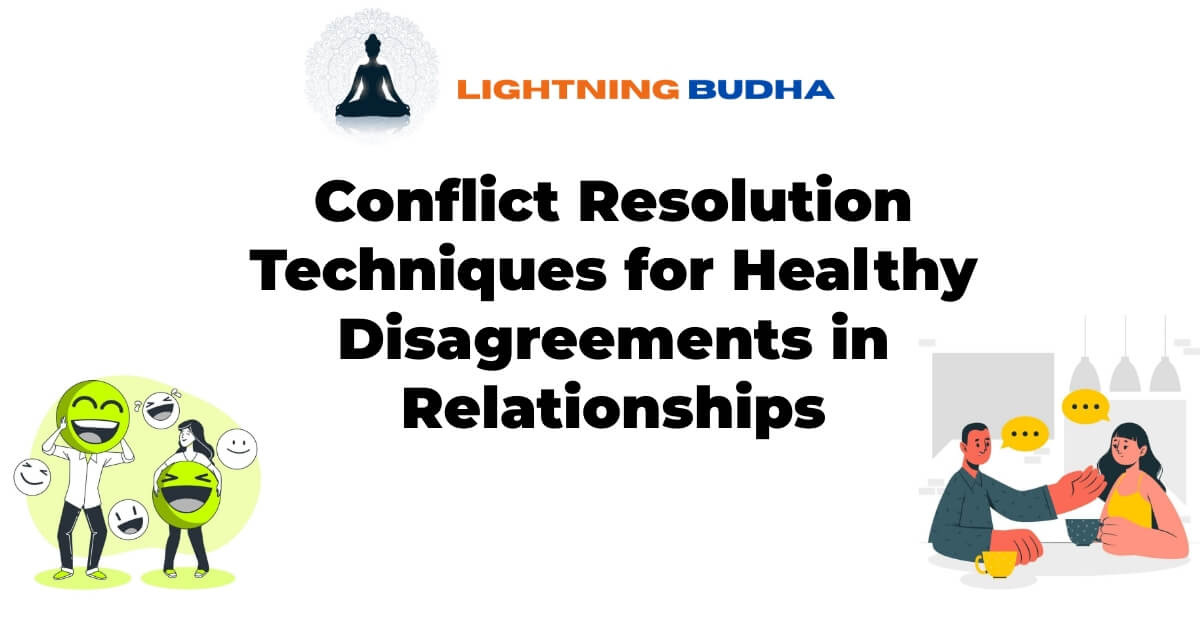Learn effective conflict resolution techniques for healthy disagreements in relationships. Discover how active listening, empathizing, and seeking compromise can strengthen your bond and foster understanding
Conflict is an inevitable part of any relationship. Just as two puzzle pieces might not always fit perfectly, disagreements are natural when two individuals with different perspectives come together. However, the way conflicts are handled can make all the difference in maintaining a healthy and thriving relationship.
In this article, we’ll explore effective conflict resolution techniques that can transform disagreements into opportunities for growth, understanding, and stronger connections.
Understanding Conflict
Before delving into conflict resolution techniques, it’s important to understand that disagreements are not inherently negative. They can be a pathway to deeper understanding and compromise. The key lies in how conflicts are managed.
Conflict Resolution Techniques – Healthy Conflicts in Relationships
Imagine a garden where rain and sunlight cooperate to promote flower growth. The core of conflict resolution strategies is this. It’s about coming up with constructive and courteous approaches to deal with conflicts.
Healthy conflicts in relationships can result in deeper connections and more understanding, much as rain aids in the growth of plants. It serves as a reminder that, in a loving relationship, resolving problems is like tending to your relationship’s garden—it makes room for expansion and long-lasting harmony.
1. Active Listening
Imagine a puzzle with missing pieces. Active listening fills in those gaps by truly understanding your partner’s perspective. When engaged in a disagreement, make an effort to listen attentively to what your partner is saying.

Give Your Full Attention: Put away distractions and focus solely on your partner’s words. This shows respect and demonstrates that their opinion matters.
Ask Clarifying Questions: If you’re unsure about something your partner said, ask for clarification instead of making assumptions.
2. Express Your Feelings
Think of the feelings in your heart as a garden that are awaiting expression. Expressing your sentiments is all about doing this. The goal is to sow seeds of understanding by being transparent with your thoughts and feelings.
Similar to how sunlight encourages flowers to bloom, verbalising your emotions fosters a connection that gets stronger with each meaningful utterance. It serves as a reminder that open and sincere communication is the foundation of a happy relationship and the place where love and compassion grow.
Open communication is like a bridge connecting two viewpoints. Express your feelings and thoughts honestly and respectfully.

Use “I” Statements: Frame your concerns using “I” statements to avoid sounding accusatory. For example, say “I feel hurt when…” instead of “You always…”
Avoid Blame: Instead of blaming your partner, focus on how the situation makes you feel. This shifts the conversation towards finding solutions rather than assigning fault.
3. Empathize and Validate
Consider a time when you felt fully understood; it would be like receiving a warm embrace. This is the core of validating and empathising. Putting yourself in your partner’s position, experiencing what they experience, and recognising their feelings are important.
Similar to how a friend’s consoling words can ease your anxieties, demonstrating your sincere concern by validating and empathising with others helps you two become closer. It serves as a timely reminder that empathy builds bridges and validation fosters trust in good relationships.
Empathy is the key to unlocking understanding. Put yourself in your partner’s shoes and validate their feelings.

Acknowledge Their Perspective: Even if you disagree, acknowledge that your partner’s viewpoint is valid and important.
Use Empathetic Language: Phrases like “I understand how you feel” or “I can see why that would be important to you” show that you value their feelings.
4. Seek Compromise
Compromise is like finding the middle ground between two paths. It involves finding solutions that meet both partners’ needs.
Think of a dance where the movements of the two partners are in perfect unison, producing a lovely beat. The goal of compromise is precisely this. Finding a balance that respects both of your needs is important, much like a dance that honours the movements of both partners.
A solution that maintains your connection is woven together by reaching a compromise, much as a music blends many notes to produce harmony. It serves as a gentle reminder that establishing common ground in a meaningful relationship is like composing a lovely song of respect and understanding.

Brainstorm Solutions: Collaborate to generate possible solutions to the disagreement. Be open to creative ideas that benefit both parties.
Prioritize the Relationship: Remember that the goal is not to “win” the argument but to find a resolution that strengthens the relationship.
How to Fight With Your Partner In a Healthy Way ( Time Magazine )
5. Take a Time-Out
Take into consideration a pause button that calms a raging sea. Taking a break has this as its core purpose. The idea is to leave a heated argument and get some peace of mind. A time-out enables both of you to gather your thoughts and feelings, much as taking a deep breath helps you regain your equilibrium.
It serves as a timely reminder that pausing can transform an argument into a thoughtful discourse in a committed partnership. It’s a setting where mutual understanding can grow, solidifying your bond.
Imagine pressing pause on a movie when emotions run high. Taking a time-out during a disagreement allows both partners to cool off and gather their thoughts.

Agree on a Signal: Establish a signal, such as a specific phrase or gesture, that indicates you both need a break.
Set a Time Limit: Decide on a time to reconvene and continue the conversation when you’re both calmer.
Conclusion
Conflict resolution is an art that requires practice and patience. By using active listening, expressing your feelings, empathizing, seeking compromise, and knowing when to take a time-out, you can transform conflicts into opportunities for growth and deeper understanding. Remember that healthy disagreements can lead to a stronger connection when handled with respect, empathy, and a shared commitment to nurturing your relationship.
Other Interesting Posts To Read:
4 Nurturing Emotional Intimacy: Deepening the Connection with Your Partner
Healing After a Toxic Relationship: Rebuilding Self-Esteem and Trust
The Foundations of a Strong Relationship: Communication, Trust, and Respect


